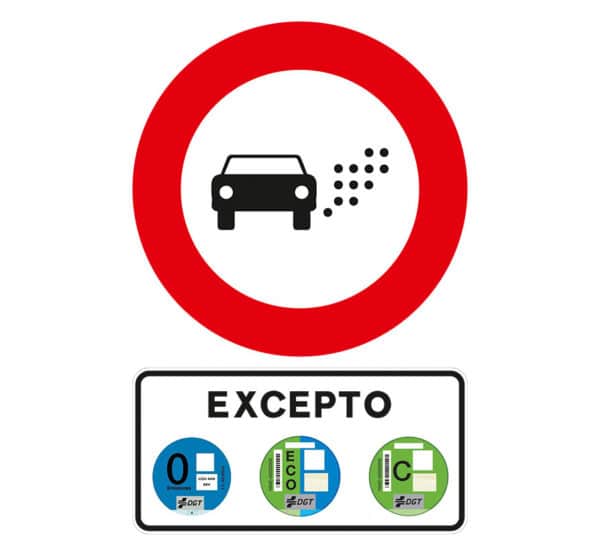There has been growing panic over the introduction of Low Emission Zones, or Zonas de Bajas Emisiones (ZBE), to give them their correct term, largely due to a change in the law that came into force on 1 January this year.
If you are confused about the whole thing, you are not alone. A survey carried out by the Alphabet mobility company revealed that half of Spanish drivers are.
Firstly, to be clear, this is not a new concept, even in Spain. These zones have been active in places like Madrid and Barcelona for many years now. What changed this year is that municipalities with more than 50,000 residents are now obliged to create these zones. Nationally, there are now some 149 towns and cities where ZBE’s will be in place, 15 of which are in the Valencia region.
Across the Valencia region, the towns affected (in population order) are: Valencia, Alicante, Elche, Castellón de la Plana, Torrevieja, Torrent, Orihuela, Gandia, Paternal, Benidorm, Sagunto, Alcoy, San Vicente del Raspeig, Elda, and Villarreal.
When these zones are created, certain vehicles will not be permitted to pass into the designated areas, which will be clearly marked by a road sign specifically created for this purpose, unless they are displaying the appropriate environmental badge, or eco sticker. Failure to comply will result in a fine of 200 euro. To be clear, you can only enter the zone if your vehicle is displaying the sticker indicated on the sign. If you do not have a sticker, or you have a sticker which is not indicated, you will be sanctioned. You will also be fined if you try to display a sticker which is not valid for your vehicle.
Generally speaking, vehicles with labels A, B and C will have restricted access in certain cities due to the application of the new law. If you want to check which sticker your vehicle is classed as, you can visit the website: https://sede.dgt.gob.es/es/vehiculos/distintivo-ambiental/ and put your registration number in the box, then click the button. If your vehicle is not entitled to a sticker, and therefore definitely will be banned, it will tell you. Otherwise it will tell you which category your vehicle falls into. This is just for information though, you don’t need to ask for a specific type when you obtain one, as the issuing body will know based on the information in your logbook.
But, and this bit is equally important, stop panicking! The law which came into force obliges town halls to create the zones, but the vast majority of them around the country have not even yet even started the process. You only need to display the sticker if you are planning to enter one of these zones, which, for the most part, do not yet exist.
As a driver, you are obliged to check and respond to all road signs and signals, and this concept is no different. Look for the signs and act accordingly. If you don’t have a sticker, don’t enter, but, as we say, the majority of towns do not yet have these zones.
Once you know you qualify, you can obtain your eco sticker by presenting your logbook and ID at one of the issuing bodies, such as the post office (although supplies of some have been running low in places), from the correos.es website, the network of workshops of the Confederación Española de talleres (CETRAA) and other networks of authorised workshops, Gestores Administrativos, the Instituto de Estudios de Automoción (IDEAUTO) and in the case of fleets, the badges can be obtained through the Ganvam association.
If you would like to know the area affected in your town, and when the legal obligations of the town hall will be obliged with, contact your local town hall direct, otherwise, keep looking for the signs.
If you still need more information, there are plenty of articles on the N332 website.






